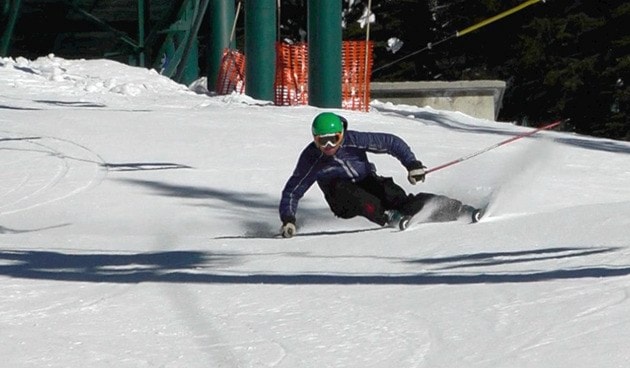As the ski season approaches, skiers are filled with a dizzying combination of preseason stoke mixed with El Nino-induced panic attacks with predictions of climatic catastrophes washing away our dreams of waist-deep pleasure and replacing them with nightmares of slush, crust, ice, frozen chicken heads, and yes, death cookies. I am here to give you some survival tips to ensure you can calm down and look forward to the season no matter what another El Nino season is going to bring.
I was curious about El Nino and La Nina so I did a little digging. El Nino is an abnormal warming of the normally cold PacificOcean waters of the Humboldt Current off the coast of Peru. This warming affects the climate across North America by pushing cooler, wetter weather down to the Southern US giving areas like Taos, New Mexico epic big snow winters while in the north we get warmer, rainier winters with some frustrating dry spells thrown into the middle of the season.
We are still above two on the multivariate ENSO index which is the formal measure used by meteorologists to determine El Nino (over +1) and La Nina (under -1). Could this mean another season like last winter’s El Nino at Whitewater? Last season’s 230 cm base was actually not that far off the average base of 280 cm up at the top of Whitewater at nearly 2,000m, but at the lodge is where the effects of the three to four degree increase in average temperature left its mark.
This temperature anomaly had a far greater impact on the lower elevation hills than it did on your precious jewel of the Selkirks, though. According to snow accumulation data from the past 40 or so years we can expect to have 91 per cent of average snowfall in an El Nino year (versus 116 per cent in La Nina years). The El Nino data does not factor in climate change and following the Earth’s hottest summer on record it might make Ulr’s job of granting your weekly powder wishes a daunting task. So, while I am the bearer of bad news, it is not the coming of the apocalypse. Or is it? Either way I will be skiing.
Tips for surviving the El Nino Apocalypse:
(I borrowed the outline from a Zombie Apocalypse Guide)
1. Stay calm.
Ninety-one per cent of average snowpack means a base of over 250 cm, so it’s still a great winter and besides, firm snow is perfect for improving technique so that when it does dump you are skiing better than ever.
2. Be prepared.
That means stocking your ski locker with a ski that has some shape and is waxed for the sticky days and sharp for the firm days.
3. Have a plan.
Set some goals for where you want to take your skiing this season. What run have you always wanted to ski but didn’t have the skill or courage?
4. Stick together.
We are all in this together and our survival depends on supporting each other. Your local skier community is here to share with you in the glory of the epic days and the harrowing tales of the wet and the icy.
This season I invite you to join me in recognizing and appreciating the winter season and our complicated weather which is created in the Pacific Ocean off the coast of Peru, delivered overland, shaped by topography, finally presenting its unrehearsed performance to us the humble audience of skiers. Show us what you got, El Nino, we are ready.
Dylan Henderson is head coach of the Whitewater ski team. His goal is to give you something to keep your skiing fresh every week even if the snow is not.
